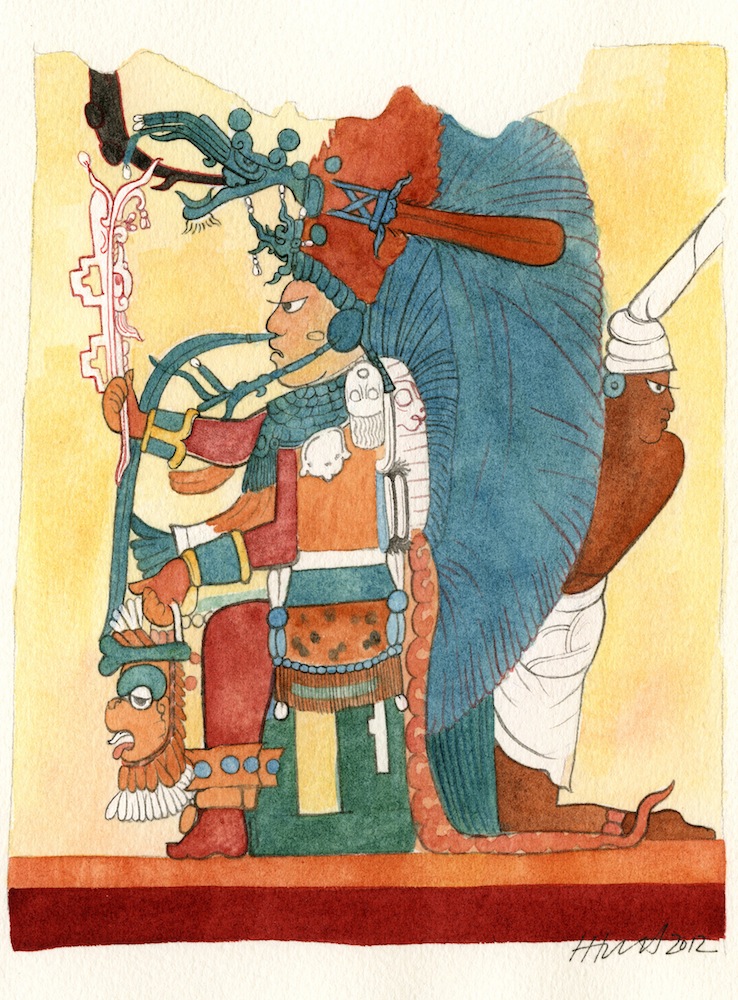End of an Era: Mayan 'Apocalypse' Today

Today is the final day in the 13th 144,000-day cycle of the ancient Mayan Long Count Calendar — otherwise known as the Mayan apocalypse.
Nevermind that the ancient Maya never predicted an apocalypse, and that their calendar is, in fact, capable of continuing on for millions of years. The idea of a world-ending event in 2012 bubbled up on conspiracy-minded corners of the Internet and caught on in pop culture with movies like the 2009 release "2012." The end result? Chinese farmers making "doomsday escape pods," NASA being flooded with worried phone calls, and supposedly mystical mountains in Europe getting overrun with apocalypse tourists.
Doomsday scares have been happening for hundreds of years, but most are sparked by charismatic leaders issuing divine proclamations. Not so for the Mayan apocalypse scare.
"It's quite unlike any other doomsday prediction," said Lorenzo DiTommaso, a professor of religion at Concordia University in Montreal.
Roots of an apocalypse myth
The Mayan apocalypse arises from one of three calendars the ancient Maya used and carved on temples and monuments. This particular calendar, the Long Count Calendar, recorded the days since the Maya's mythical creation date in five chunks of time. First, the k'in, which counted day-by-day up to 20 before rolling over like a car odometer into units called uinals. One uinal is 20 days. Uinals then counted upward to the next unit, called a tun, with each tun consisting of 18 uinals, or a total of 360 days.
From there, the cycles continue. Twenty tuns become one ka'tun (7,200 days total) and 20 ka'tuns become one b'ak'tun (144,000 days total, or close to 400 years).
Breaking space news, the latest updates on rocket launches, skywatching events and more!
By matching Mayan calendar dates to our own calendar, researchers have concluded that Dec. 21, 2012, is the likely date for the last day of the 13th b'ak'tun. (Dec. 23 or Dec. 24 are other possibilities, thanks to different units on the calendar turning over at different times of day.)
Written in modern translation, that makes Dec. 21, in Mayan date, 13.0.0.0.0. Tomorrow, Dec. 22 will be 13.0.0.0.1
A different doomsday
What makes this doomsday different is that no one religion or cult is pushing it, as occurred with the Biblically inspired Harold Camping doomsday in 2011. Doomsday predictions are almost always a top-down phenomenon driven by one religious leader, DiTommaso told LiveScience. The Mayan apocalypse rumors, however, arose online and consist of dozens of conflicting predictions about what will happen.
"This is the first time it's occurred as a global phenomenon," DiTommaso said of the grassroots doomsday rumors. [Oops! 11 Failed Doomsday Predictions]
The rumors may arise from a simple culture clash. The Maya saw time as cyclical; westerners, influenced by early Jewish and Christian tradition, tend to assume an end will eventually come.
"It's that world of the ancient Maya colliding with the Western world, which has all kinds of religious traditions firmly anchored in these end-of-the-world types of beliefs," said Dirk van Tuerenhout, an anthropologist and curator of "Maya 2012: Prophecy Becomes History," an exhibit ongoing at the Houston Museum of Natural Science.
Debunked predictions
Among the predictions: A "rogue planet" or asteroid will crash into Earth; solar flares from the sun will destroy the planet's electronics; the Earth's magnetic field will flip-flip, similarly destroying electronics or perhaps leaving people without protection from cosmic radiation.
NASA has debunked all of these astronomical predictions. There are no near-Earth objects set on a collision course with the planet, for example, nor is the sun unusually active. Magnetic field flip-flops do occur, but over periods of thousands of years, not in the blink of an eye.
Another set of believers doesn't think the world will end on Friday, but instead will undergo a change in consciousness or a move toward universal peace. The Maya themselves see the day as the dawn of a new era, and there are ceremonies scheduled all over Central America that are not fearful, but hopeful.
This story was provided by LiveScience, a sister site to SPACE.com. Follow Stephanie Pappas on Twitter @sipappas or LiveScience @livescience. We're also on Facebook & Google+.
Join our Space Forums to keep talking space on the latest missions, night sky and more! And if you have a news tip, correction or comment, let us know at: community@space.com.

Stephanie Pappas is a contributing writer for Space.com sister site Live Science, covering topics ranging from geoscience to archaeology to the human brain and behavior. She was previously a senior writer for Live Science but is now a freelancer based in Denver, Colorado, and regularly contributes to Scientific American and The Monitor, the monthly magazine of the American Psychological Association. Stephanie received a bachelor's degree in psychology from the University of South Carolina and a graduate certificate in science communication from the University of California, Santa Cruz.

